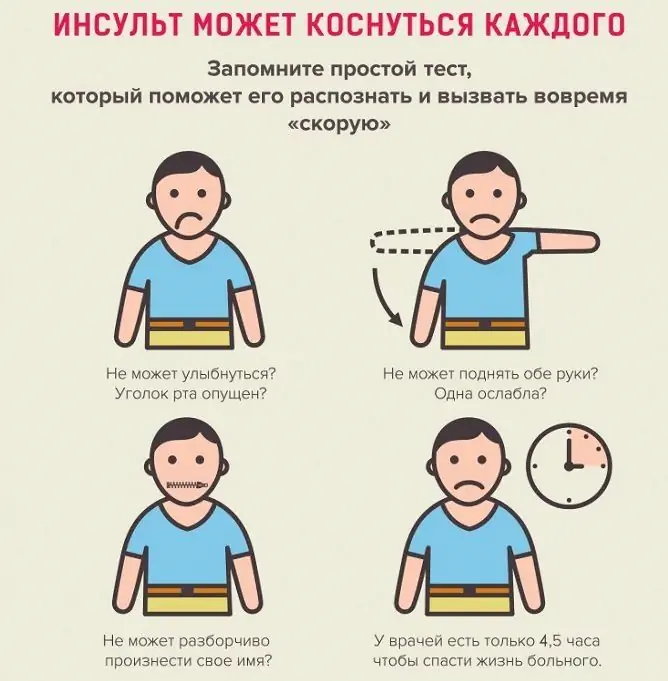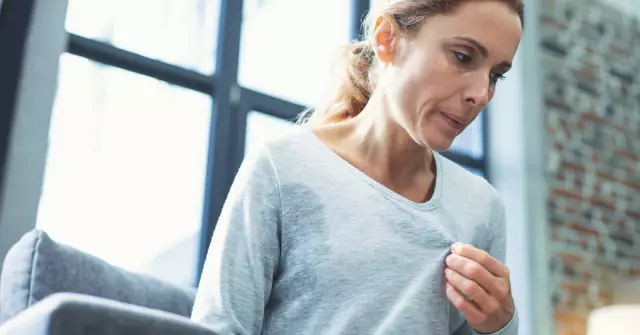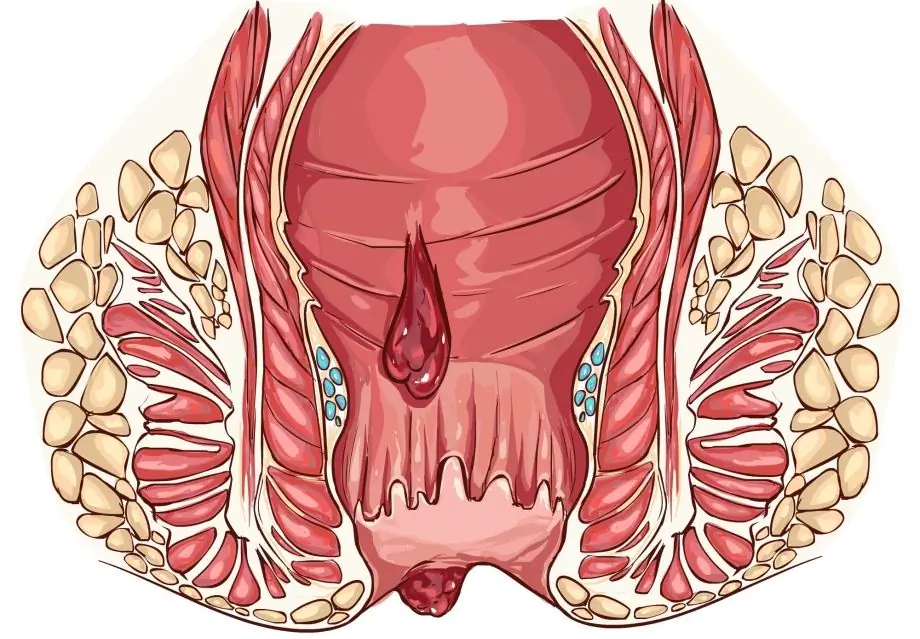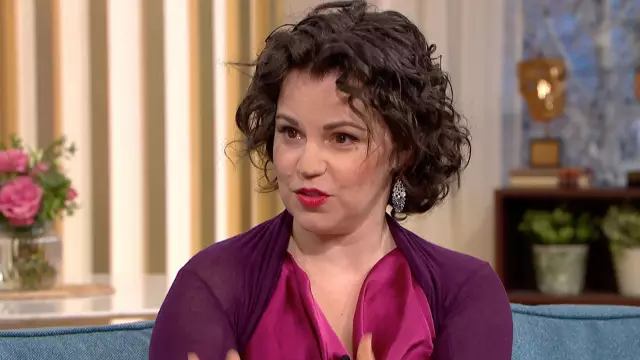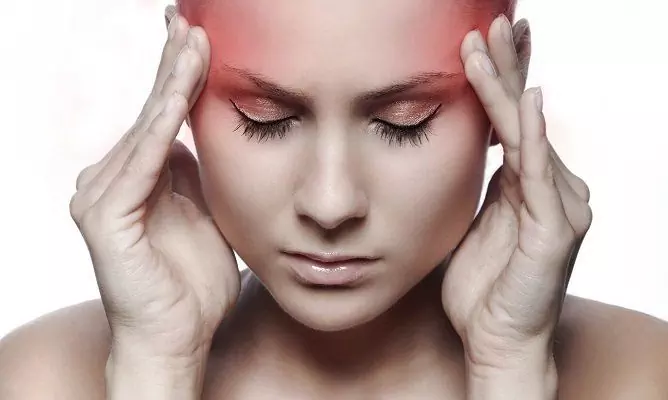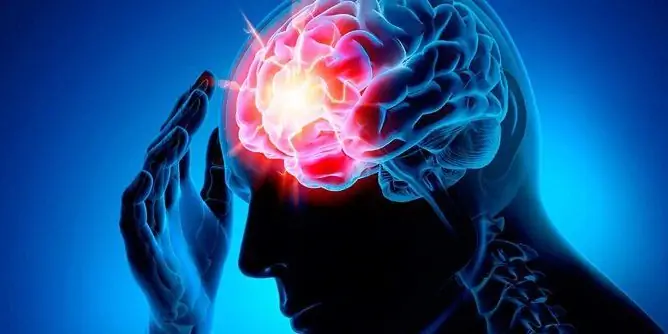- Author Rachel Wainwright [email protected].
- Public 2023-12-15 07:39.
- Last modified 2025-11-02 20:14.
Microstroke and stroke: signs in women, first aid, causes and prevention
The content of the article:
- Stroke symptoms in women
- How to identify a stroke
- What to do if a woman has signs of a stroke
- What causes a stroke
- How to avoid a stroke or recurrence
- Video
Signs of stroke in young women are often ignored due to atypical symptoms. For this reason, despite the fact that stroke is less common before the age of 30, the mortality rate of women from it is slightly higher.
In recent years, there has been a more frequent detection of stroke in middle-aged women, but women over 60 years of age suffer from it.
A stroke is an acute disorder of cerebral circulation that develops against the background of a blockage or rupture of a blood vessel in the brain. This disease today belongs to the most frequent lesions of the central nervous system in adults and to the pathologies that most often lead to death and disability of patients.
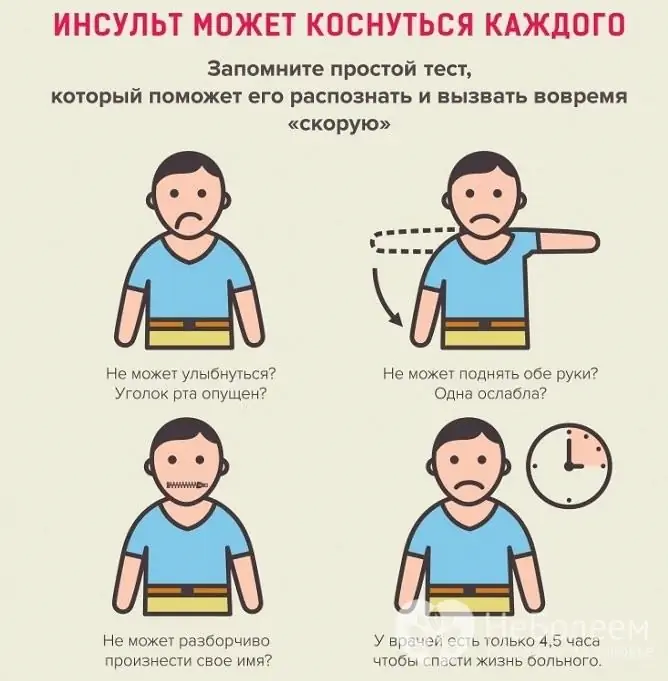
A quick stroke test can save a person's life
Stroke is divided into ischemic and hemorrhagic. Another type is a microstroke, or transient ischemic attack.
Acute cerebrovascular accident in women is more severe than in men, the mortality rate is higher. The period of rehabilitation in women after a stroke is usually longer than in men, the processes of recovery in the body are slower, and long-term consequences (paralysis, paresis, dizziness, speech and gait disturbances) develop more often.
Stroke symptoms in women
The course of the disease in young women and older patients may be slightly different - in patients over 50 years of age, brain damage usually occurs faster.
Stroke symptoms are typical and atypical. The latter are characteristic to a greater extent of women, they can complicate diagnosis in the first hours of the development of pathology.
The first sign of stroke in women is usually a sudden, high-intensity headache. Added to this are visual and / or hearing impairments, dizziness, speech impairments, numbness of the face and / or limbs, facial paresis on one side, impaired gait and coordination of movements, severe weakness.
If the stroke is hemorrhagic rather than ischemic, the clinical picture is usually more severe. Photophobia, dysphagia, confusion, or loss of consciousness may develop.
With high blood pressure, there is hyperemia of the skin of the face, bradycardia, turn of the foot of one leg outward.
Atypical symptoms include pain and a feeling of congestion in the ears, severe pain in the chest, shortness of breath, difficulty breathing, tachycardia, severe thirst, a feeling of dryness of the mucous membranes of the mouth, hiccups. Some patients experience nausea, vomiting, agitation, fever.
The presence of certain signs of a stroke depends on which part of the brain was affected. Left-sided stroke is more common (with the right side of the body affected, and vice versa). With a left-sided stroke, speech, writing, and reading disorders can also develop. In the case of a right-sided stroke, speech disorders are usually absent, but they can be noted in left-handers.

A sign of a stroke is a violation of the symmetry of the face, a lowered corner of the mouth
The signs of stroke and microstroke in women may be the same, but usually with a microstroke they are less pronounced and quickly regress. Nevertheless, a microstroke is not a harmless condition, often transient ischemic attacks are precursors of stroke in women.
How to identify a stroke
The danger of acute disorders of cerebral circulation lies in the fact that the patient is not always able to independently recognize the precursors and the first symptoms of pathology, and when a stroke occurs, she can no longer help herself. Meanwhile, it is critically important to seek help as soon as possible, treatment should be started no later than 6 hours after the attack, it is impossible to provide adequate help at home.
Others can help identify a stroke in time. If there is a suspicion that an acute violation of cerebral circulation begins, it is recommended to conduct an express test of four simple steps:
- ask a person to smile - with a stroke, the smile will turn out to be distorted;
- ask to raise your arms up and stay in this position for a while - with a stroke, it is difficult to raise your arms to the same height;
- ask to say a simple phrase, for example, give your name - with a stroke, speech is impaired, a person speaks like a drunk;
- ask to stick out your tongue - with a stroke, the tongue deviates from a straight line.
It is important to remember this test, perhaps one day it will save someone's life.
What to do if a woman has signs of a stroke
If an acute violation of cerebral circulation is suspected, even if we are talking about a possible microstroke, the patient should be immediately hospitalized in a hospital.
What to do, how to provide first aid? Mainly, you should ensure peace and fresh air, and not leave the patient alone until the arrival of doctors. The patient should be laid down with a raised head end, loose tight clothing, with the development of vomiting, turn the head to one side, substitute a suitable container. No medication should be given before the arrival of the ambulance.
The arriving doctor needs to be informed about the symptoms noticed, the drugs taken by the patient, the existing diseases, the presence of allergies, as well as the measures taken.
What causes a stroke
The main reasons for the development of stroke include pathologies of the cardiovascular system (arterial hypertension, arrhythmias, coronary heart disease and its complications, atherosclerosis of cerebral blood vessels), diabetes mellitus, old age, exposure to stress, physical and psycho-emotional overstrain, excess weight, unhealthy lifestyle (lack of sleep, overwork, malnutrition, physical inactivity).
At what pressure a stroke occurs depends on what the patient's working blood pressure is. So, in women with hypotension, a stroke can also occur with a blood pressure that is considered low, for example, at 130/95 mm Hg. Art.
The risk of developing a stroke increases in women during pregnancy, especially in the case of its pathological course, with prolonged use of oral contraceptives, chronic migraines, polycystic ovary syndrome, mastopathy, the presence of bad habits (smoking over the age of 35 is especially dangerous).
The causes of hemorrhagic strokes include congenital changes in the blood vessels of the brain (aneurysms, arteriovenous malformations), traumatic brain injury.
How to avoid a stroke or recurrence
To prevent the occurrence of a stroke or, if it has already happened, a relapse, you can seriously approach prevention. The main method of prevention is a healthier lifestyle. This concept includes rational nutrition, rejection of bad habits, correction of excess body weight, sufficient physical activity, blood pressure control, adequate night sleep, stress avoidance.

A healthy lifestyle is the basis for both primary and secondary prevention of strokes
If a microstroke or stroke has occurred, it is important to undergo a course of drug therapy aimed at improving cerebral circulation, to be regularly monitored by a doctor. An effective rehabilitation, as well as the prevention of possible relapses, is a spa treatment.
Video
We offer for viewing a video on the topic of the article.

Anna Aksenova Medical journalist About the author
Education: 2004-2007 "First Kiev Medical College" specialty "Laboratory Diagnostics".
Found a mistake in the text? Select it and press Ctrl + Enter.

